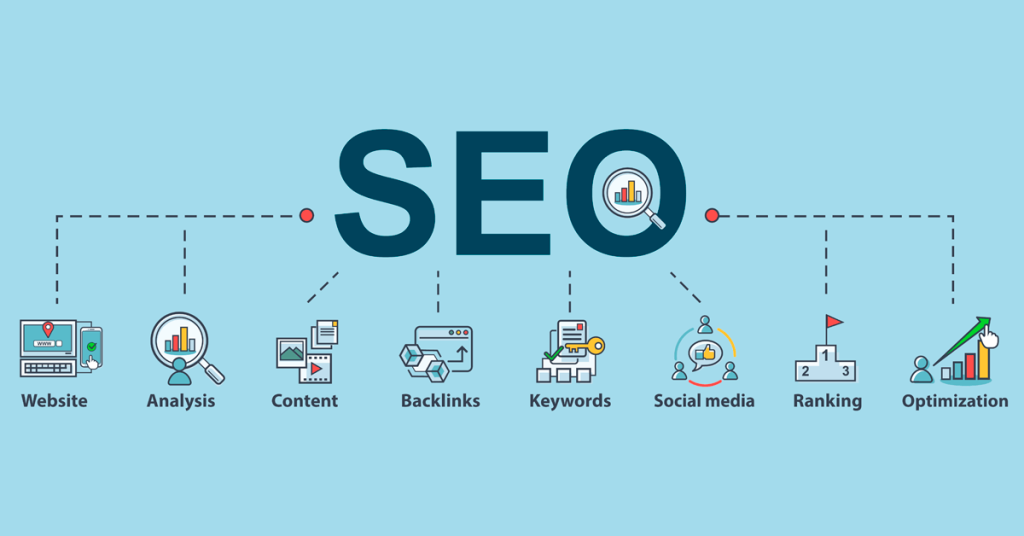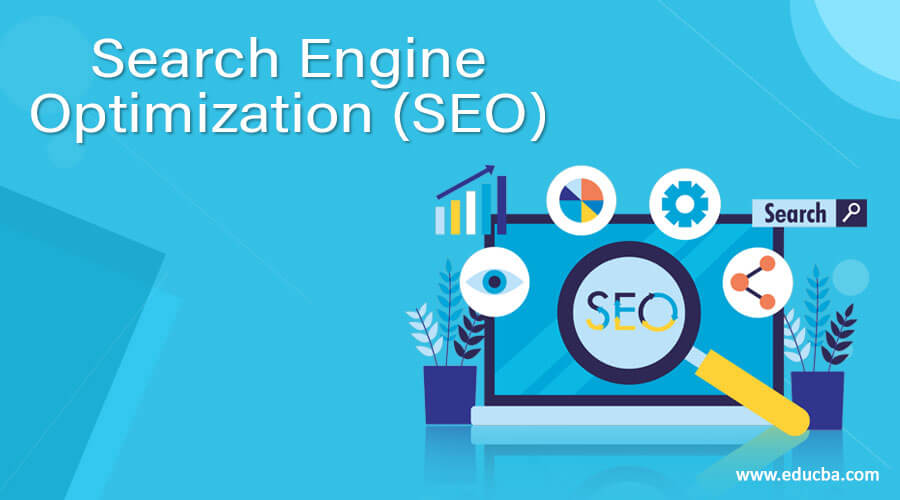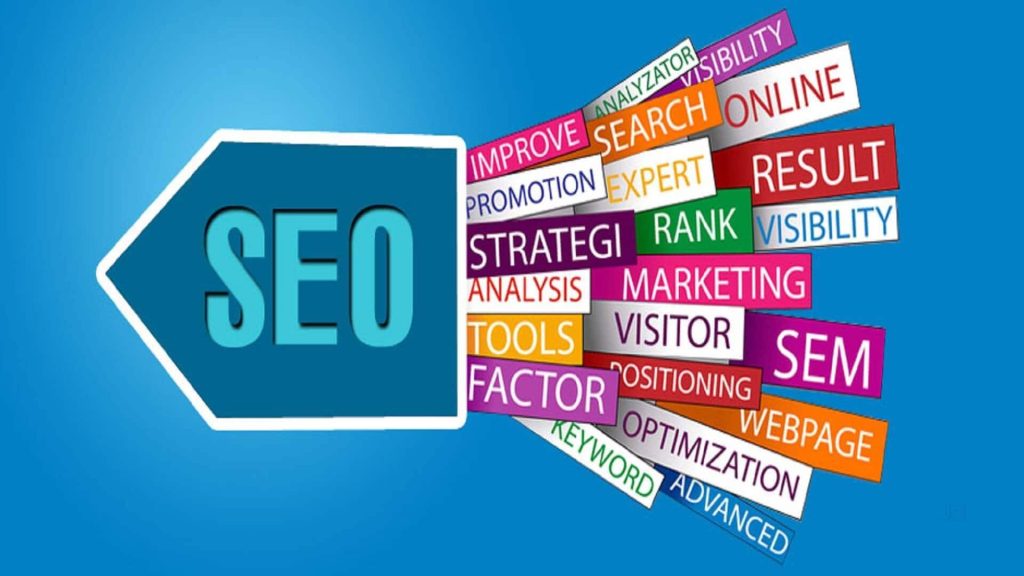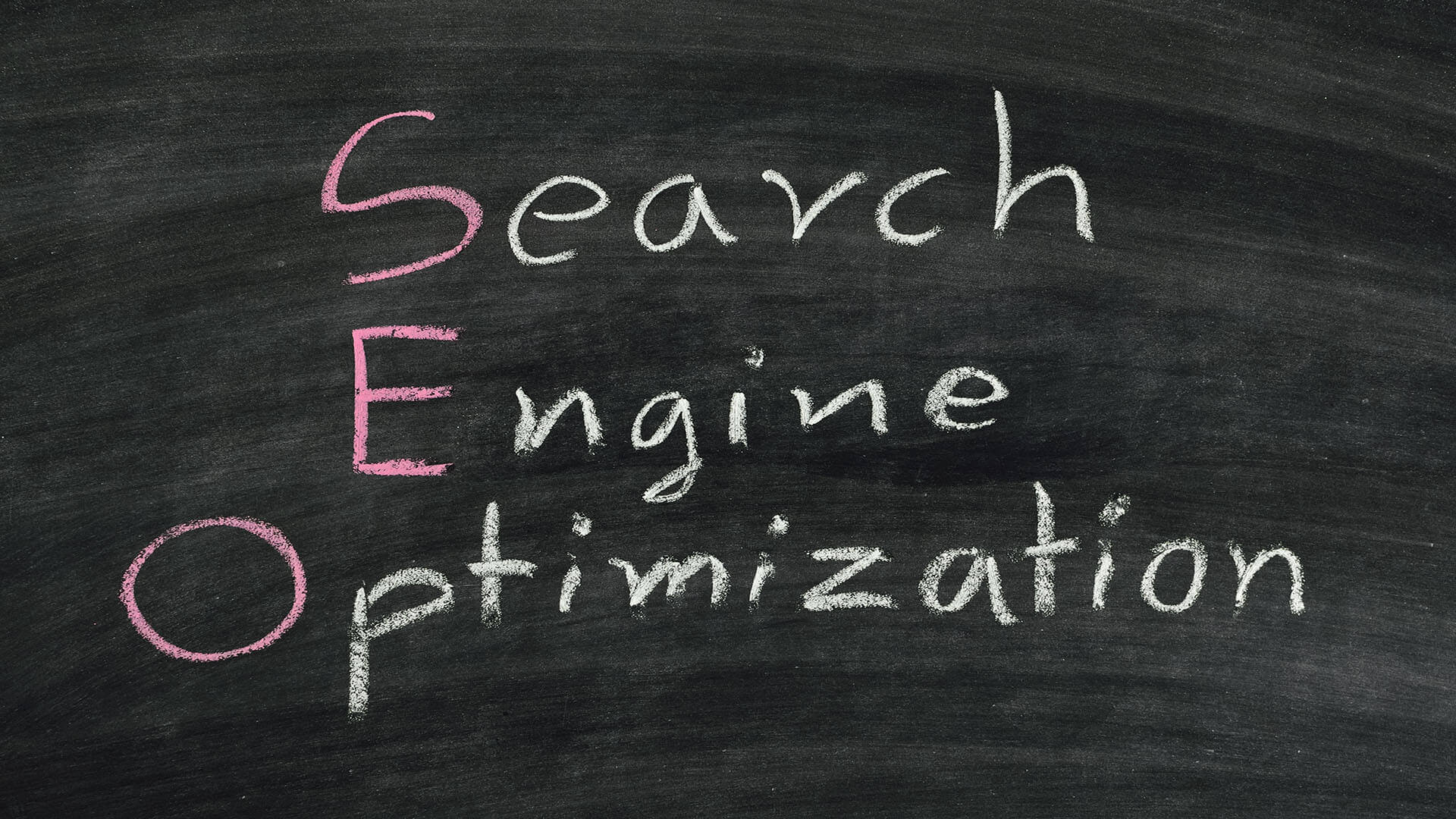You’ve probably heard of Search Engine Optimization (SEO). You may have heard it a lot from online marketers, or read it. What does SEO actually mean?
SEO is the process of increasing your website’s visibility on search engines. This can be achieved by optimizing your website for keywords people use when searching the web.

This guide will explain what SEO is and how you can use it to rank higher than your competitors on Google.
Search Engine Optimization (SEO), What Is It?
SEO stands for Search Engine Optimization. It is the collective optimization efforts that you support to get your website and pages higher in the organic “unpaid” search results of Search Engine Results Pages of Google, Bing, and other search engines.
Search engine Optimization is everything you do to increase your website’s visibility online.
Visibility is helping users locate your content in search engines that are related to the product or service.
This SEO meaning is not complicated. This definition doesn’t account for technical and other moving parts. It does capture the essence of Search Engine Optimization.
Let’s now dive deeper into SEO and discover how it can be used to increase business.
SEO: Why is it important?
SEO is a great strategy to increase traffic to your website and to attract more people to it.
SEO campaigns aim to make sure that you are seen by as many people as possible. This includes being found on Google, Yahoo!, Bing and other search engines.
SEO is an integral part of any marketing strategy that you use to grow your online business. If you are launching a new product, or service, high-quality content will drive traffic to your site. If you sell products and services, it can help with conversions.
Here are some interesting facts about SEO that you should know
You can gain search engine results from your business or entrepreneur by performing SEO.
Here are some interesting facts about search engine optimization:
- About 89 per cent of B2B customers use major search engines to find services and products.
- 4 out of 5 consumers use search engines to find information about local businesses. 51% of all website traffic comes via search engines.
- In front Web works reports that websites that rank high in the Google search results get 95% of all web traffic.
It’s not enough to just have a website. When customers search for answers via search engines, they should be able to find your content.
To get the best traffic, you must ensure your website appears on the first page in Google search results.
Your goal should be to get on the first three pages because 32.5% of total traffic to Google’s first page is the average traffic.
How do you get your website to rank in the top in search engines result pages?
We want to help you.
- Learn the meaning of SEO
- SEO foundational knowledge.
- Learn how search engines work.
- Find practical and efficient SEO tips to understand customers’ search intentions.
- Optimize your website and content for search engines, humans.
- How to properly promote your website
- Learn about the future of search.
So, if you’re ready, let’s dig in.
Search Engine Optimization: What is it all about?
SEO is a combination of techniques that aim at improving the visibility of websites in search engines. It achieves the following:
- Start by registering search engines to crawl, index, rank, and discover your website.
- Second, make sure your website and content are available to users whenever they need them.
- Third, ensure that your website is at the top.
- Keep your website online.
Although it sounds easy, it is actually quite complicated. Let’s talk about each of these points.

The first goal is to address the technical side of SEO. This is to improve all ranking signals that search engines use in order to rank and organize web pages.
The second objective, however, is human-centric. This goal is to place your website in a unique position among users’ choices by answering users’ questions or solving their problems with relevant, timely and useful content.
SEO is third. It aims to get your website on the first page of search results. This means achieving high rankings on major search engines such as Google, Yahoo!, Bing, and Yahoo!
SEO is the final step to ensure your website remains at the top search results. This means that your website is visible to all visitors who return to it again and again.
It is clear that SEO success relies on developing a dual-prong strategy. This includes satisfying search engine requirements while also providing excellent user experiences.
Once you have mastered the basics, it is time to understand how search engines work and why people search.
What is the working principle of search engines?
As technology advances over the years, search engines have become more capable of indexing and retrieving information from the internet.
Google, the world’s most popular search engine, has evolved to be a complex maze of machines.
You’ll be able to identify the core functions of the search engine if you can peel away layer by layer the systems, components and processes.
- A web crawler, or spider, is a program that searches for new web pages.
- It crawls the page. It crawls the page to gather as much information about it as possible.
- Indexing is done. The search engine uses several ranking factors to try to organize the information based on how trustworthy and relevant they believe it to be.
- Google serves up a list of web pages that it believes can help users when they query the search engine.
Search engine optimization your website makes your web pages searchable by search engines. It also allows the web crawler crawl your pages and index them.
However, it is important to be able to instruct web crawlers to crawl specific pages only. You can also restrict their indexing to certain parts of your website or completely stop them from crawling your entire site.
Uploading a robot.txt to your root directory will allow you to quickly tell web crawlers what part of your site they should or shouldn’t crawl.
Googlebot, which is what Google’s web crawlers call themselves, lands on your site and first checks the root directory for robots.txt files.

Googlebot will crawl your site if it cannot find robot.txt. If a robot.txt file is uploaded to your site, the Googlebot will try to avoid crawling or indexing those pages.
Understanding user search intent
You are optimizing your website both for search engines and people. SEO has become more than just about search engines. It is now a balance between technical know-how, marketing and SEO.
When users start their search journey, you want to be there. You should be available to answer all their questions and provide them with the information they need to make informed purchasing decisions.
Understanding your customer’s behavior across devices and platforms is key to this. To produce content that matches searcher queries at all stages of the buying process, you will need to be able to grasp searcher intent.
Searchers are searching the search engines to either gather more information about a topic or to locate specific information about the keywords they used.
These search intentions can be further divided into three types: Navigational, transactional, and informational. Each search intent marks a particular phase of the user’s journey.
- If they are looking for general information on a subject?
- Do they want to accomplish a particular action? Buy a product, solve an issue, or do they just want to do something?
- Are they searching for directions to a particular location or site?
These intentions must be anticipated. These intents must be anticipated. Optimize the content to make sure that your content is visible when a user searches for related keywords.
How to optimize content for search engines
The ideal content will be the one that covers all three search intents.
This guide will show you how to create content that users love.
For instance, you’ve done your keyword research. Now you have a list with the key phrases and keywords that you want to rank for.
If you haven’t already, you might want to check out this guide for keyword research.
Best winter running shoes is one example. This phrase seems like a great keyword with transactional intent that you can rank for your homepage.
Google any keyword to understand search intent and see the page rankings.
For example, winter running shoes” – A Google search shows all web pages ranking for this term. These are review and listicle article results, which indicates that the query’s intent is informational.
It’s not what you expected.
Here’s what’s happening. Search engines aim to improve the user experience. Their algorithm usually considers how users react to a search term.
- Is the user able to click on the sites listed on the SERP?
- Do they spend enough time looking through the website content after clicking on the links?
- Or do they press the back button and immediately return to the SERP
These questions give Google information about the type of content that users are searching for. Google will therefore double down on providing those types of content.
These insights will allow you to create content that matches users’ search intent.
You will need to either create a review or a list highlighting the best winter running shoes for our illustration.
Technical SEO – What is technical SEO?
This refers to all technical tasks such as Onpage SEO or Off-page SEO that you do to optimize and rank websites and make them more search engine-friendly.
Each of these are essential for the success and viability of your search engine optimization campaign today in digital world.
When it comes to getting actual traffic and appearing on Google, simply putting together a website with content about your business will not suffice.
What is On-Page Search Engine Optimization?
Search Engine Optimization/ On-page SEO includes all you do on your site and pages. This makes it easier for search engines understand the page and rank it for relevant keywords.
There are 16 factors you can optimize for.
- Strategically position your keyword at the start of the SEO title, Meta description and sub-H tags, if possible.
- Use short descriptive URL
- Your page title should not exceed 60 characters
- Optimize your image file names with keywords. Also, use descriptive alt tags that include your keyword for images
- You can mix your keywords with synonyms or other LSI key phrases.
- You can link to your website from other sources
- Link with other quality and high-trust websites
- Speed up your website. Google Page Speed Insights or GT matrix are free tools that can help you monitor the speed of your site. They also highlight actions that you can take to improve it.
- Mobile-friendly websites are essential.
All in One On-Page SEO Services will take care of all your On-page SEO needs.

On-page SEO is important – Why is it important?
At its core, On-site/On-page SEO focuses on increasing visibility of your content in search engines for related keywords while giving a website visitor the best experience.
Website speed optimization is one example of On-Page optimization. It eliminates any issues that could lead to a slow loading website.
Users expect websites to load in 3 seconds, according to the study. 53 percent of visitors will leave your site if your website takes too long to load.
Google also uses site speed to determine if you are losing revenue. This could lead to your ranking being removed from search results.
Off-Page SEO – What is off page SEO?
Off-page SEO, as the name implies, is a compilation of all efforts made outside of a site to improve its visibility in search engines. It drives traffic to a website and links juice/ authority.
Other SEO techniques include building back links, social media mentions, and listing your business in the local directory.
These are some of the most effective off-page SEO techniques to improve your website’s rank on the SERPs.
Social media Marketing – Find out how you can leverage social media to grow you business, even if your a complete novice.
Press release marketing – Here’s an Ultimate Guide on How to Do Press Releases.
Guest blogging – This will greatly increase your rank in a short period of time.
Listing Your Business on Directory – Listing you business in important and relevant directories is a powerful Off-page Method
In-Content link Building – This technique allows you to post blogs that contain anchor links to your website from high-DA websites.
Permanent Back links – These back links can be extremely powerful and difficult to obtain, but they can greatly improve your Off-page SEO. They are placed on the root domain/homepage of a high DA website.
These are the best off-page SEO techniques you can expect to receive from a top agency. They will help build awareness, drive visits, and eventually improve your website’s rankings on search engines.
Why is off-page optimization important?
Search engines strive to provide the most trustworthy and relevant results for users’ queries. The search engine algorithm uses several ranking signals, which include off-page SEO factors.

To determine the trustworthiness and credibility of a website, search algorithms consider the quality and number of links linking to it.
If you have many natural links linking to your website, and if they are coming from trusted sites, it tells the search engine: People trust this website, so I can also trust it.
Back linking to your website is the most popular off-page method. However, make sure the links are:
- These are trusted websites
- Coming from similar websites
- The anchor text isn’t spammy
Learn more about SEO Link Building Our Ultimate Guide to SEO Link Building is available.
Off-page Search Engine Optimization should be used to promote your site and improve search engine perception. The goal is to rank on Google’s first page for target keywords.
What are the best ways to learn SEO?
It is important to understand what you are doing, and why. You will get better results if you know the basics of search engine optimization.
You won’t be able optimize your site if you don’t understand search engines.
SEO is an essential part of any website. SEO is a complex field that requires continual learning and improvement. It also requires an understanding of how search engines work.
BrandLume offers SEO services to small businesses that want to increase their online presence.
We can either help you start with an SEO audit or take it from there. We know that each client and every business are unique and offer several packages to fit all budgets.
1. Keyword Research
Keyword research is the process of identifying keywords that will lead people to your website. These keywords should be relevant to your business, but not too generic. Generic keywords are words that have little meaning to search engines.
It is also important to use the right SEO tools when performing keyword research. This will make the job easier and faster.
2) On-Page Optimization
Make sure that the page contains all relevant content to the keyword. If someone searches for flower delivery, it is a good idea to include images of flowers, descriptions, prices, as well as contact information.
These elements should be optimized with keywords so that your website appears first when someone searches for it.
3) Off-page optimization
This refers to improving your Back links (links that point to your site from other websites). It will boost your ranking if you have many quality back links linking to your site.
This can be done through guest posting, social bookmarking and forum posting as well as blog commenting and article writing.
4) Content Marketing
This means that you provide valuable and informative content that solves problems and answers questions. People expect to find useful information when they type in their keywords. If you give them articles, videos and podcasts, they will return.
5) Social Media Marketing
Social media Marketing is a method of marketing that makes use of social media platforms such as Facebook, Twitter and LinkedIn to promote your company. You’ll gain trust and credibility by sharing engaging posts and engaging your followers.
6) Link Building
This means obtaining back links from other websites. This is one of the best ways to increase your rank because it establishes authority. People linking to your site say they believe that you are valuable enough to include it in their sites.
7) Email Marketing
This is sending emails to prospects and customers. This is another great way to stay in touch with potential and current clients. It is also an economical way to reach potential clients.
Although you can send email for free, an email service provider (ESP) is required. An ESP provides many features, including spam filtering, deliver ability, security, and more. An ESP provides many features, such as spam filtering and deliver ability.
8) Reputation Management
Management of a brand’s reputation online is the process that monitors, manages, and improves it. It allows you to identify problems early and then take corrective action before they become major problems.
This includes checking social media for negative comments about your business or company, responding to them, and removing any damaging material.
9) Mobile Marketing
It is focused on mobile users through creating apps, responsive web pages and SMS marketing. Google may not always display mobile-friendly websites at top of search results.
10) Local Search
SEO strategies must include local search. Local searches are the best way to increase traffic and converts, usually done via mobile devices.
Google My Business (GMB), Facebook Places and Foursquare are all tools that can be used to optimize your listing and bring in new customers.
11) SEO Analytics
Google’s SEO Analytics service provides detailed information on websites’ performance.
It was compiled from data obtained from Google search engine users and other services such as YouTube, Gmail and Blogger.
This tool displays information about how each page performs, the time visitors spend on each page and what browsers they use to arrive at the site.
Understanding the future search
The internet is an amazing place. The internet is a vast and sprawling source of knowledge that everyone can access. However, it does have its challenges. Many factors influence how high your website ranks in search engines today and tomorrow as well as years down the line.
Although search engines have been around for many decades, their algorithms have drastically changed over the years. They have evolved to be something entirely different than what they were originally designed for. It’s important to understand how to drive traffic and sales, as we depend heavily on them for our daily lives.
It’s important to know where search engines are going next with all the changes taking place. We are here to help.
What’s the next step for SEO?
The way people search for information changes as technology improves. New devices will be available. These devices will also be available for SEO optimization.

Voice search is the next frontier for SEOs. We are seeing the rise of voice searches. As mobiles have dominated desktop search channels, Voice search is poised to take over as the preferred search channel.
Google, or at least search engines, is moving toward an AI-powered algorithm that will revolutionize how we optimize websites.
Regardless of all the technological advances, human beings will always be the focus of search. To conquer the SERPs in the future, you must focus on providing a great user experience just like it is today.
Book a 30 minute free SEO consultation with experts if you require non-sales advice about SEO.
Our world-famous SEO services are available at no extra cost and with no long-term contracts . These SEO services have been used by more than 8200 companies worldwide and 300 agencies.
Select the Best SEO Marketing Services for Your Brand
Businesses are now running multiple campaigns simultaneously to improve their market visibility. You must select the best SEO services to market your brand in your chosen industry or niche. You will be overtaken by your competitors if you don’t.
